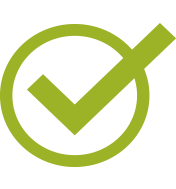COMM 0070. Mass Communication: Media and Society
Units: 3
Advisory: Completion of ENGL C1000 with grade of "C" or better
Hours: 54 lecture
Focuses on the intersections of mass communication, media and society. This course examines the evolution of mass communication through modern media (modalities, content and trends), as well as the role of journalism in matters of ethics, perception, representation, and globalization. (C-ID JOUR 100) (CSU, UC)
COMM 0070 - Mass Communication: Media and Society
https://catalog.sierracollege.edu/course-outlines/comm-0070/
Catalog Description Advisory: Completion of ENGL C1000 with grade of "C" or better Hours: 54 lecture Description: Focuses on the intersections of mass communication, media and society. This course examines the evolution of mass communication through modern media (modalities, content and trends), as well as the role of journalism in matters of ethics, perception, representation, and globalization. (C-ID JOUR 100) (CSU, UC) Course Student Learning Outcomes CSLO #1: Explain how media influences identity development and change. CSLO #2: Investigate and evaluate the relationship between media literacy and equity (e.g., diversity, inclusion, accessibility, power, social justice). CSLO #3: Analyze the role of journalism in relation to culture, power, and viewer/user perceptions. CSLO #4: Identify and discuss journalism ethics. Effective Term Fall 2025 Course Type Credit - Degree-applicable Contact Hours 54 Outside of Class Hours 108 Total Student Learning Hours 162 Course Objectives 1. Identify and explain the role of media and its effect/influence on key components of society (e.g., culture, politics, norms, power, technology). 2. Discuss and evaluate the role of journalism in modern society (including the relationship between journalism and identity). 3. Develop critical thinking skills to critique and analyze the relationship between media and social interactions, including face-to-face as well as digital. 4. Identify and apply mediated communication terms and theories to produce mediated content that addresses social justice issues in society. 5. Produce media and performative works that engage social justice themes, addressing the historical, ethical, legal, and media technologies that shape social discourses. General Education Information Approved College Associate Degree GE Applicability AA/AS - Behavioral Sciences CSU GE Applicability (Recommended-requires CSU approval) CSUGE - D Social Sciences CSUGE - D7 Interdisciplinary Soc/Behav Cal-GETC Applicability (Recommended - Requires External Approval) IGETC Applicability (Recommended-requires CSU/UC approval) IGETC - 4 Soc./Behav Sciences IGETC - 4G Intrdis Social/Beha Articulation Information CSU Transferable UC Transferable Methods of Evaluation Classroom Discussions Example: Using the central tenets of Muted Group Theory, instructors may facilitate a conversation with students about when, if at all, they have witnessed the theory in action from personal experience? Students should be encouraged to make connections between the role of the media and the evidence they provide for the theory. Essay Examinations Example: Example: Bias Detection and Ethics Report Select: a timely mediated news story of personal interest from a traditional news source (CNN, FOX, MSNBC, etc.), working to avoid social media news and clickbait. Students will then Summarize and Analyze the report in their own words, paraphrasing the major claims and engaging proper formatting. The summary should seek to identify and explain any biases, stereotypes, inflammatory or sensory-laden language, ethical breaches suspected within the news story. Finally, students should conclude their report by doing a Compare/Contrast of same news story reported from TWO other reputable news sources, making connections to the class readings/learning. Example: Citizenship Journalism as the New Norm Students will write an academic essay detailing at least 3 benefits and 3 criticisms to citizenship journalism, while also considering what consequences and effects, if any, citizenship journalism poses to the industry writ large. The essay should reflect the student’s understanding of journalism ethics and integrate academic research to support their position. Objective Examinations Example: Students take unit or chapter quizzes showcasing their understanding of key concepts and theories. Problem Solving Examinations Example: Students are given two ethical scenarios, each demonstrating a potential breach in journalism ethics. Students are asked to explain the breaches, compare and contrast the implications of the ethical breach to the mediated context and potential audience(s), and to recommend the best course of action for future case scenarios. Projects Example: Students will create an original blog site as part of a semester-long portfolio, and regularly post original content connected to class concepts, theories, and current events in the news media. The blog sites will be published and demonstrate their understanding of learned content. Skill Demonstrations Example: Working in groups, students will use their knowledge of social media theories and trends to design a powerful and social-justice focused Public Service Announcement that addresses an immediate need in our local community. Using technology available on campus, students will plan, write, and record their PSAs and post to a (class specific) social media site for peer feedback. Repeatable No Methods of Instruction Lecture/Discussion Distance Learning Lecture: The instructor will lead a class discussion that traces the evolution of traditional media through modern modalities. Students will then create and discuss their own media evolution timelines as groups. The instructor will use a variety of mediated clips to showcase a media theory in action (e.g., Uses and Gratification Theory). The instructor will next facilitate a classroom discussion that challenges student perspectives of agency, audience, and equity. Students will view the clip(s), discuss who is muted and by whom, share their perspectives, and in doing so, apply key terms. Students will share their interpretations and personal reactions to a current news story. Students should self-reflect upon and explore/explain their interpretation of the event as it relates to their ideas of media history, identity, politics, and expressions of culture and power. Distance Learning Using the course management system, students will develop a presentation highlighting the significance of media coverage in shaping a particular event, era, or social trend. (e.g., controversies surrounding an incoming president, selection of supreme court justice, the coverage of a natural disaster and subsequent relief efforts, a trending social movement, etc). First, they will select a story of interest and choose two traditional news sources to follow. Next, they will choose two social media news sources that are telling the same story. In groups, students will create a digital presentation sharing their news stories and findings, including any biases and the quality/accuracy of each news source. Student should consider issues of power, voice, author/readership, etc. Typical Out of Class Assignments Reading Assignments Read an academic article that discusses the relationship between new media and the self, as well as the positive and negative impacts of new media on our interpersonal relationships. Be ready to discuss the way you believe social media shapes identity. Writing, Problem Solving or Performance 1. Respond to the following prompt: do you believe certain types of speech (e.g., profanity) or speech acts (e.g., threats) should be censored by social media giants? Why or why not? Consider, for example, how in the late 2010s Craigslist was asked to take down several classified pages that were investigated and thought to be tied/connected to human trafficking efforts. Responses should be critically informed and reflect, in part, the learning from class readings and lessons. 2. Take a position: Considering the role of Twitter (and/or other social media giants) in U.S. Politics and more specifically, U.S. elections, discuss how social media's ability to censor user content affects society, democracy, and individual freedoms. Refer back to the controversies surrounding social media censorship. Other (Term projects, research papers, portfolios, etc.) 1. Develop a portfolio of media messages for a given media format and time period from the list (e.g., Television in the 1960s or Magazine Ads from the 1980s). The portfolio must include a timeline of important events, the people associated with these changes, and an analysis summarizing the importance of this particular era in mass media. Provide a list of resources where important content from this era can be found, such as internet links to radio archives or copies of newspaper clippings. 2. Select a media topic of personal interest for a persuasive presentation. Develop a stance/position and create a call to action – one that is relevant to the audience. Students should prepare an introduction, main body with 2-3 major claims and academic sources as support, and a conclusion that includes a call to action. The persuasive presentation should function as a critique of larger discourses surrounding media use, consumption, production, etc. Required Materials Media & Culture: An Introduction to Mass Communication Author: Campbell, R., Martin, C., Fabos, B., & Becker Publisher: Bedford/St. Martin's Publication Date: 2022 Text Edition: 13th Classic Textbook?: No OER Link: OER: No Media, Society, Culture and You Author: Poepsel, M. Publisher: Southern Illinois: Rebus Community. Publication Date: 2021 Text Edition: 1st Classic Textbook?: No OER Link: OER: Yes Understanding Media and Culture: An Introduction to Mass Communication Author: Anonymous (Author removed at request of original publisher) Publisher: University of Minnesota Libraries Publishing: Creative Commons Publication Date: 2016 Text Edition: 1 Classic Textbook?: No OER Link: OER: https://open.umn.edu/opentextbooks/textbooks/143 Social Media and Society: An Introduction to the Mass Media Landscape Author: Luttrell, R., & Wallace, A. A. Publisher: Rowman & Littlefield Publishers Publication Date: 2021 Text Edition: 1st Classic Textbook?: No OER Link: OER: No Other materials and-or supplies required of students that contribute to the cost of the course.
Applied Art and Design
https://catalog.sierracollege.edu/departments/applied-art-design/
...0012 Visual Communication (also COMM 0012 ) or AAD...Principles and Process AAD 0070 Graphic Design II...


